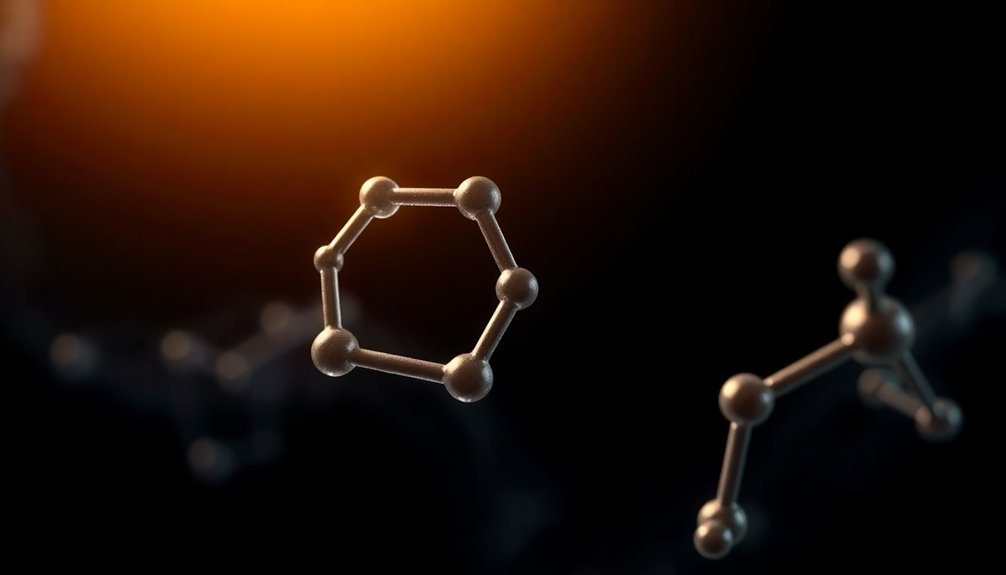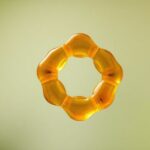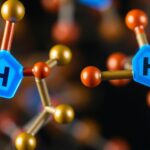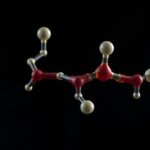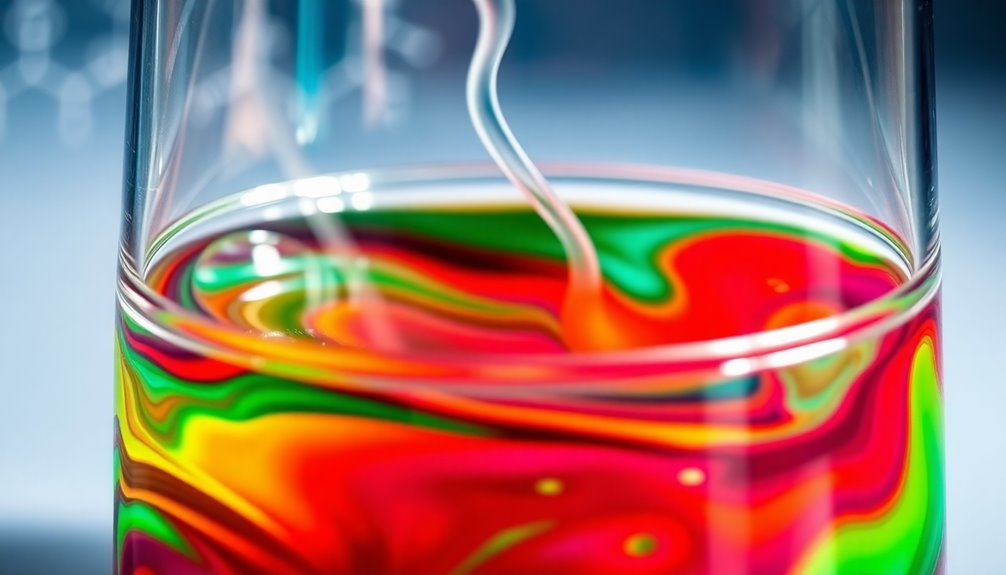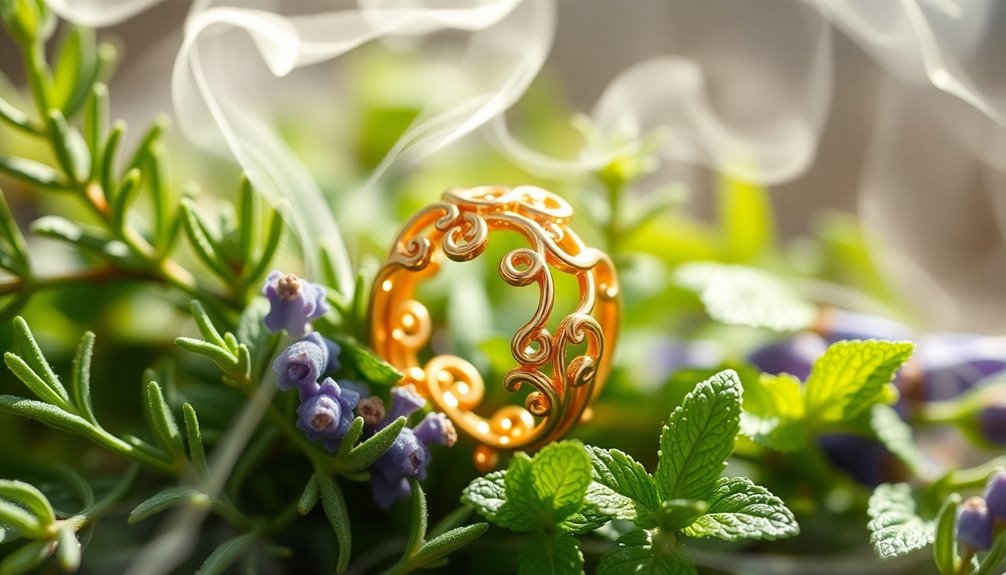Furan's aromaticity comes from its unique five-membered ring structure, which includes four carbon atoms and one oxygen atom. You see, all the atoms are sp² hybridized, allowing for a planar arrangement that creates effective overlap of p-orbitals. This setup supports resonance, with six π electrons that satisfy Hückel's rule. The oxygen's lone pair contributes to the delocalization of electrons, enhancing stability while reducing reactivity. These factors combine to grant furan its aromatic character, distinguishing it from non-aromatic compounds. If you're curious about its applications and properties, there's more to explore!
Key Takeaways
- Furan has a cyclic structure that allows for continuous p orbital overlap, satisfying the criteria for aromaticity.
- It follows Hückel's rule with six π electrons (4n + 2), confirming its aromatic character.
- The planar geometry of furan enhances orbital overlap, contributing to its stability and lower reactivity.
- Resonance stabilization from multiple equivalent resonance structures reinforces furan's aromatic nature.
- The involvement of the oxygen atom's lone pair in the π system increases electron delocalization, further supporting its aromatic properties.
Definition of Furan
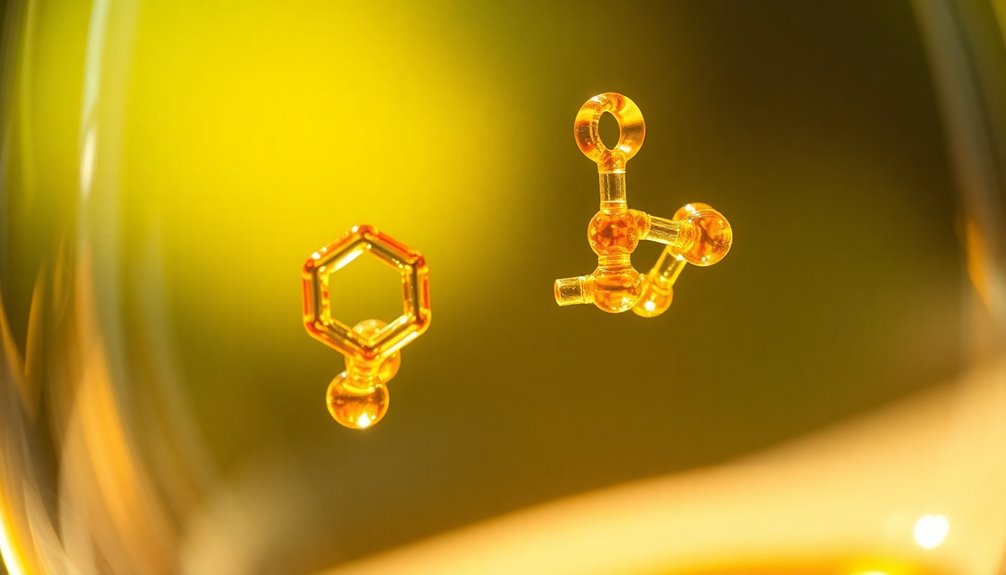
Furan is a fascinating heterocyclic organic compound that features a five-membered ring with four carbon atoms and one oxygen atom. Its molecular formula, C4H4O, tells you it consists of four carbons, four hydrogens, and one oxygen.
The planar structure of furan is vital for its aromatic properties, allowing for effective overlap of p-orbitals. This overlap leads to a delocalized electron system, which is characteristic of aromatic compounds. By adhering to Hückel's rule, furan contains six π electrons that contribute to its stability and aromaticity.
Because of these qualities, furan is widely used in the synthesis of various chemicals and pharmaceuticals, making it an essential compound in organic chemistry.
Criteria for Aromaticity
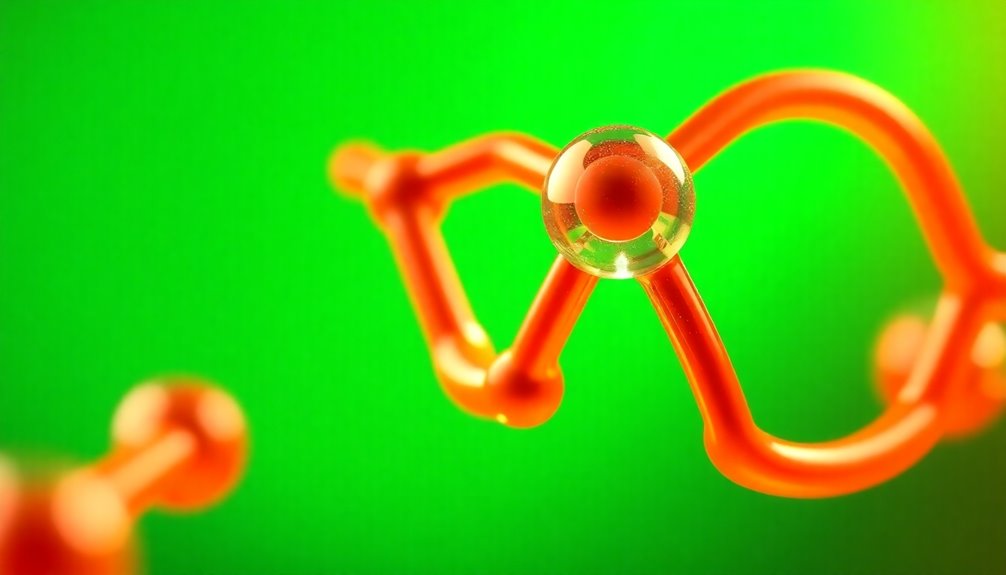
To understand why furan is aromatic, you need to contemplate the essential criteria that define aromatic compounds.
First, furan has a cyclic structure that allows for continuous overlap of p orbitals, which is fundamental for maintaining stability. It contains six π electrons, satisfying Hückel's rule (4n + 2), where n equals one for furan.
Additionally, the planar geometry of furan is significant for effective orbital overlap, enhancing its aromatic nature.
Furan also exhibits resonance stabilization, showcasing multiple equivalent resonance structures that demonstrate electron delocalization within the ring.
Finally, the presence of one oxygen atom contributes a lone pair to the π system, further boosting its aromaticity.
These factors work together to classify furan as an aromatic compound.
Structure of Furan
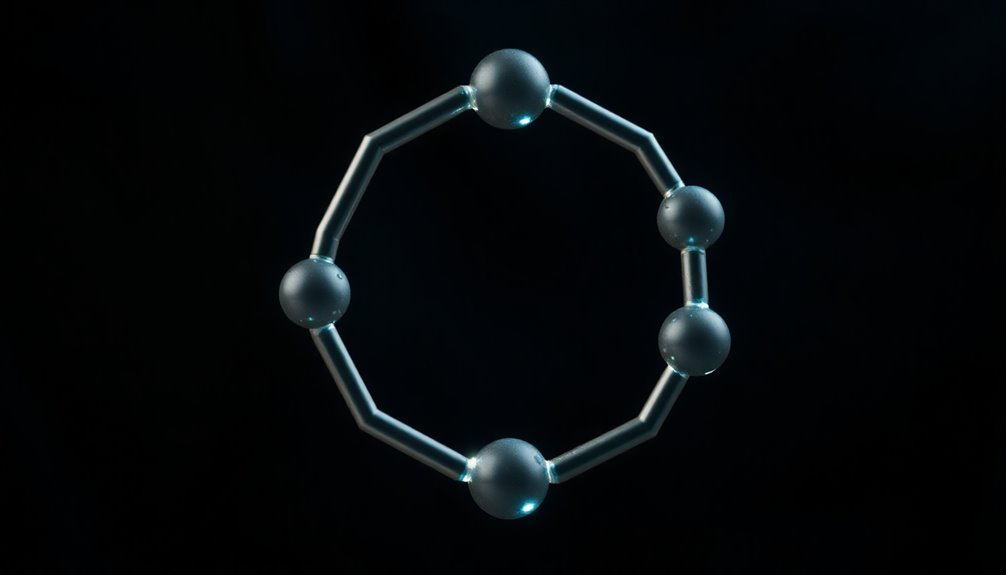
Furan features a five-membered ring made up of four carbon atoms and one oxygen atom, which gives it a unique heterocyclic structure.
You'll notice that the oxygen's sp² hybridization keeps the molecule planar, a key factor for its aromatic properties.
Additionally, resonance structures highlight the delocalization of electrons, further stabilizing the molecule and enhancing its aromatic character.
Five-Membered Ring Structure
The five-membered ring structure of furan is a fascinating example of heterocyclic chemistry, featuring four carbon atoms and one oxygen atom. Each atom is sp² hybridized, creating a planar arrangement that allows for the delocalization of π electrons. The structure also showcases two double bonds, contributing to furan's stability. Importantly, one of the oxygen's lone pairs of electrons participates in the π electron system, enhancing aromaticity and resonance.
| Feature | Description | Emotional Impact |
|---|---|---|
| Ring Composition | 4 Carbon, 1 Oxygen | Intriguing Complexity |
| Hybridization | sp² Hybridized | Sense of Balance |
| Resonance | Multiple Equivalent Structures | Stability and Beauty |
Planarity and Hybridization
While exploring the structure of furan, you'll notice that its planarity plays an essential role in establishing its aromatic character.
Furan consists of a five-membered ring with four carbon atoms and one oxygen atom, all contributing to a flat structure. Each atom in the ring is sp² hybridized, which means that they've one unhybridized p orbital that aligns perfectly in the plane.
This arrangement allows for the effective overlap of p orbitals and supports the delocalization of π electrons. With two double bonds present, furan maintains a continuous π electron system, fulfilling the criteria for resonance stabilization.
Ultimately, this planarity and hybridization enable furan to satisfy Hückel's rule, confirming its aromatic nature.
Resonance and Electron Delocalization
Building on the concept of planarity and hybridization, resonance and electron delocalization are key to understanding furan's aromatic properties. The five-membered ring features an oxygen atom that contributes a lone pair to the delocalized π system, enhancing stability.
This results in:
- Increased stability through resonance structures.
- The fulfillment of Hückel's rule with six π electrons.
- Lower energy compared to non-aromatic compounds.
The delocalization of electrons allows the lone pair from oxygen to form double bonds with adjacent carbon atoms, creating a network of resonance.
This not only stabilizes the molecule but also makes furan uniquely aromatic, setting it apart from other compounds and eliciting admiration for its elegant structure.
Delocalization of Electrons
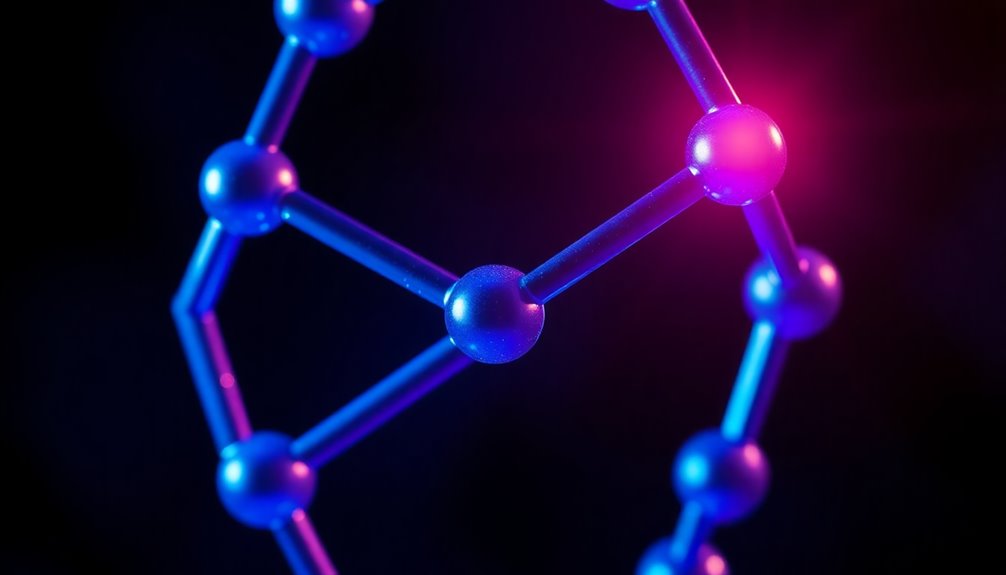
When you look at furan, you'll notice that its aromatic character stems from the delocalization of electrons.
The lone pair on the oxygen atom joins the π system, creating resonance structures that spread out electron density.
This electron participation not only stabilizes furan but also lowers its reactivity, setting it apart from non-aromatic compounds.
Electron Participation Mechanism
Furan's aromatic nature stems from the effective delocalization of electrons within its five-membered ring structure. The integration of four carbon atoms and one oxygen atom allows for a unique electron participation mechanism.
Here's why it matters:
- The oxygen atom donates a lone pair, adding to the delocalized π electron system.
- The overlap of p orbitals creates a stable continuous π system.
- This delocalization enhances stability, making furan less reactive compared to non-aromatic compounds.
This interplay between carbon and oxygen not only reinforces furan's aromatic character but also highlights the beauty of electron delocalization.
Understanding this mechanism is essential to appreciating furan's unique properties and its role in various chemical reactions.
Resonance Structures Contribution
Although many compounds exhibit some degree of resonance, furan stands out due to its unique five-membered ring structure, which allows for effective electron delocalization.
In furan, four carbon atoms and one oxygen atom create a π system where six π electrons reside. The oxygen's lone pair contributes to this system, enhancing furan's stability.
The resonance structures illustrate how electrons can move, with double bonds shifting between carbon atoms, reinforcing its aromatic character.
With five resonance forms, you'll see different arrangements of π bonds that confirm furan as an aromatic compound because one of its key features is the delocalized electrons.
This delocalization leads to increased stability and lower reactivity compared to non-aromatic compounds, highlighting furan's importance in heterocycles.
Hybridization and Geometry
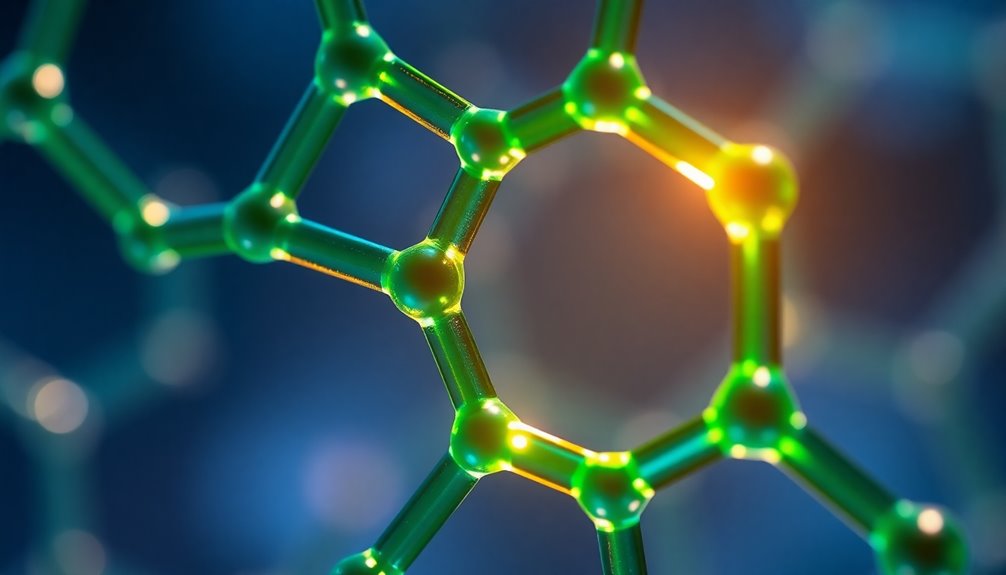
Four atoms in furan exhibit sp² hybridization, which is vital for its aromatic properties. This hybridization creates a planar structure that allows for effective overlap of p orbitals. The result is a delocalized π electron system that stabilizes the compound.
Here are three reasons why this matters:
- Stability: Delocalization enhances furan's stability, making it less reactive.
- Planarity: The sp² hybridized atoms guarantee furan remains flat, essential for aromaticity.
- Lone Pair Contribution: The oxygen's lone pair occupies a p orbital, integrating into the delocalized system.
Together, these factors create a continuous overlap of p orbitals, fulfilling the requirements for aromaticity and making furan a fascinating compound in organic chemistry.
Resonance in Furan
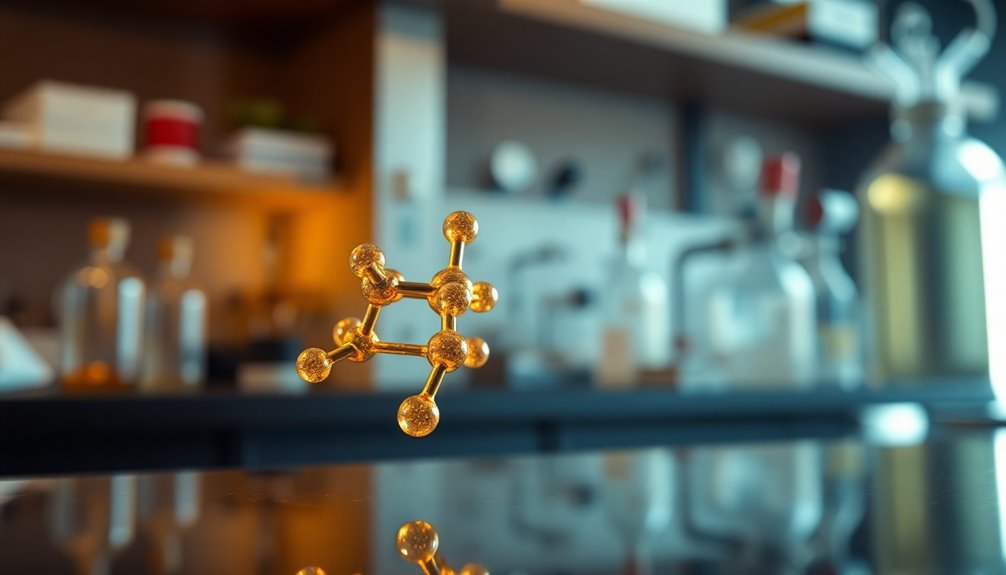
The aromatic nature of furan is further illustrated by its resonance structures, showcasing how electrons are delocalized throughout the molecule.
Furan has five resonance forms, with the lone pair on the oxygen atom contributing to the π electron system. In these forms, the positive charge shifts between the oxygen and carbon atoms, which stabilizes the molecule through shared electrons.
This resonance allows for continuous overlap of p orbitals, essential for maintaining aromatic character. The presence of multiple resonance structures means the actual electron distribution is an average of these forms, enhancing stability.
The delocalized electrons also lead to reduced reactivity compared to non-aromatic compounds, further solidifying furan's aromaticity.
Comparison With Non-Aromatic Compounds
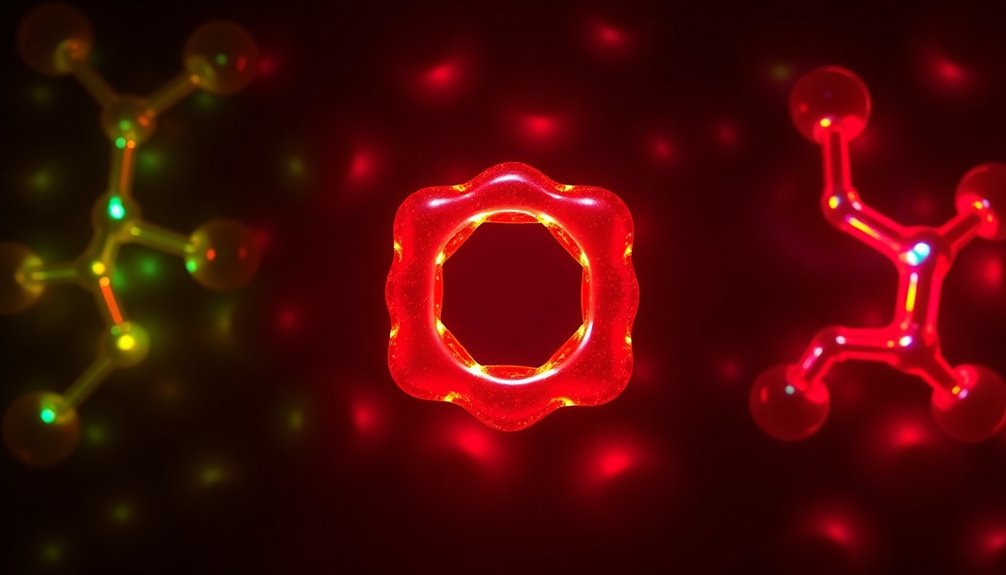
When comparing furan to non-aromatic compounds, it's clear that furan's unique five-membered ring structure plays an essential role in its aromaticity. Unlike non-aromatic compounds, furan allows for the delocalization of π electrons, which stabilizes the molecule and enhances its chemical properties.
Here are three key differences that highlight its aromatic nature:
- Furan follows Hückel's rule, possessing six π electrons, while non-aromatic compounds generally don't meet this criterion.
- Furan's planar geometry enables effective p orbital overlap, essential for aromaticity.
- The stability of furan contrasts sharply with the reactivity of non-aromatic compounds due to their lack of resonance stabilization.
These factors underscore how the delocalization of electrons in furan sets it apart as a truly aromatic compound.
Importance of Aromaticity
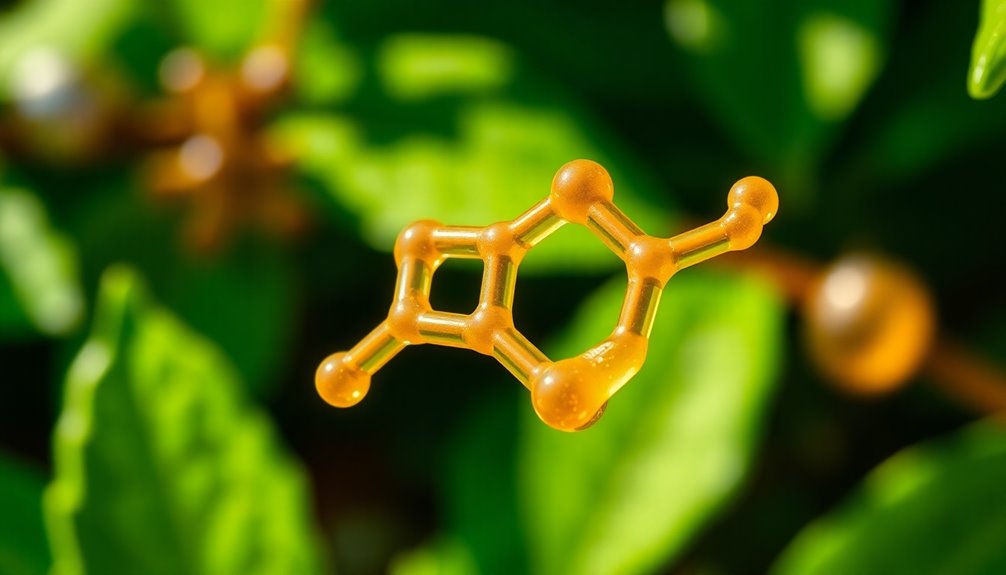
Understanding the importance of aromaticity in furan can greatly impact how you approach synthetic organic chemistry and pharmaceuticals. Furan's aromatic nature stems from the delocalization of π electrons, providing stability and influencing its reactivity. This stability is essential for applications in material science and drug development.
| Property | Furan | Non-Aromatic Compound |
|---|---|---|
| Electrons | 6 (4n + 2) | 4n |
| Stability | High | Low |
| Geometry | Planar | Non-planar |
| Reactivity | Less reactive | More reactive |
Frequently Asked Questions
What Is the Huckel Rule for Furan?
The Hückel rule states that a cyclic compound needs (4n + 2) π electrons, where n is a non-negative integer, to be classified as aromatic.
For furan, it has 6 π electrons: 4 from two double bonds and 2 from the oxygen's lone pair.
What Is the Reason for Aromatic?
Aromatic compounds are unique due to their cyclic structure and delocalized electrons, which create stability.
You'll find that these compounds follow Hückel's rule, requiring a specific number of π electrons—often six.
The planar structure allows for effective overlap of p orbitals, enhancing electron delocalization.
When you analyze the molecular features, you realize that this combination of factors makes aromatic compounds particularly stable and reactive, setting them apart from non-aromatic compounds.
Why Is Furan More Aromatic Than Thiophene?
You know what they say: "Not all that glitters is gold."
When comparing furan and thiophene, furan shines brighter due to its oxygen atom's lone pair, which boosts its π electron count to six. This satisfies Hückel's rule, making it more aromatic.
The sp² hybridization of oxygen enhances electron delocalization, while thiophene's sulfur doesn't contribute as effectively.
With more resonance structures, furan's stability and aromatic character outclass thiophene's.
Why Is Furan Not Stable to Acids?
Furan's instability in acids stems from its electron-rich oxygen, which makes it prone to protonation.
When you expose furan to acidic conditions, it forms a furanium ion, a less stable structure due to increased positive charge. This instability is worsened by potential electrophilic attacks on the ring, disrupting its aromatic character.
Additionally, the presence of the heteroatom, oxygen, makes furan more reactive than hydrocarbons, which tend to resist protonation better.
Conclusion
In summary, furan's aromatic nature stems from its unique structure and the delocalization of electrons, creating a stable, resonant system. Just like a well-tuned orchestra, where every note plays an essential role, the electrons in furan harmonize to enhance its stability and reactivity. Understanding why furan is aromatic not only deepens your appreciation for organic chemistry but also highlights the intricate dance of electrons that defines countless compounds in nature.

